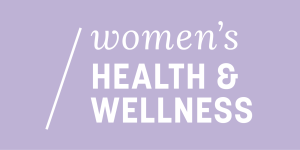
By David Buice
Many Americans have traditionally considered heart disease to be “a man’s problem,” but there’s no truth to that assumption. The sad reality is that since 1984 more women have died of heart disease than men, and in the United States, heart disease is the number one cause of death in women, responsible for one in three deaths among women every year. Put another way, heart disease takes the lives of more women than all forms of cancer combined.
As the American Heart Association points out, heart attack and stroke can occur among women at any age, not just in the elderly. That makes it imperative that women know their risk factors and family history. Women also need to be mindful of the unique life experiences that can affect their risk of heart problems, including pregnancy and menopause.
Menopause increases a woman’s risk of heart disease. It occurs in most women between the ages of 45 and 55 and is confirmed when a woman has not had a period for 12 months. Upon entering menopause, the ovaries no longer produce eggs, and they also stop making the hormones estrogen and progesterone.
In a woman’s younger years, estrogen helps protect against heart disease, a form of protection no longer enjoyed with age. In addition, changes in blood vessels make it more likely for plaque and blood clots to form, while an increase in fibrinogen — a substance that helps the blood to clot — can potentially contribute to heart disease and strokes.
One measure to counter the menopausal hormonal changes that increase the risk of heart disease is hormone replacement therapy (HRT), using a combination of estrogen and progestin (the synthetic form of progesterone). This combination is used because estrogen alone, when not balanced by progesterone, can stimulate growth in the lining of the uterus, potentially increasing the risk of endometrial cancer.
In addition to HRT, there are a number of other things women can do to promote heart health before, during, and after menopause. Protective measures include getting regular exercise, eating a healthy diet that includes plenty of fresh fruits and vegetables, maintaining a healthy weight, not smoking, and limiting alcohol consumption to no more than one drink per day. Finally, it is also essential to manage stress through things like meditation and self-awareness while controlling other health conditions such as high cholesterol and high blood pressure.
DID YOU KNOW?
- Studies show that only about 44% of women recognize that cardiovascular disease is their number one health threat.
- Cardiovascular disease is a leading killer of new mothers and causes over one-third of maternal deaths.
- Almost 52% of high blood pressure deaths are among women, and 57.5% of stroke deaths are women.










